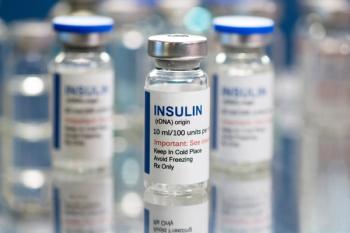
FACTS FROM YOUR PHARMACIST: Monitoring Your Asthma: Peak Flow Meter Basics
Asthma is a chronic lung disease that affects approximately 20 million Americans. The airways of the lungs become blocked and narrowed, making it difficult for a person to breathe. These effects generally can be reversed if the person is treated with the right medications in a timely fashion. They could, however, cause a severe asthma attack requiring emergency medical services.
Other symptoms of asthma, in addition to shortness of breath, include coughing, wheezing, and chest tightness. Asthma accounts for more than 500,000 hospitalizations in the United States and costs the health care system over $15 billion per year.
Monitoring Your Asthma
Monitoring your asthma is key. Just as patients with diabetes should monitor blood sugar, asthma patients should monitor peak flow. Yet, only a few patients know what a peak flow meter is and how to use it correctly. Only a small percentage of patients actually use a peak flow meter to monitor their asthma.
A peak flow meter is a small device that can be held in your hand. It is used to measure the amount of airflow from your lungs in order to determine how well your asthma is controlled. A peak flow meter often can detect small changes in your lung function hours to days before you feel any changes. Therefore, it helps you know when to seek assistance from a health care provider in order to prevent a severe asthma attack.
Patients with asthma should monitor their peak flow regularly. Depending on your asthma symptoms, your health care provider may recommend using your peak flow meter several times a week to several times a day.
How to Use a Peak Flow Meter
The first step in using a peak flow meter is to find your "personal best"peak flow number. To find your personal best, use your peak flow meter in the morning before taking any of your medications, after using your "rescue"inhaler, and at any other time your health care provider suggests for a period of 2 weeks. Keep a record of all of the readings during this time. The highest reading you record during this time period is your personal best. All of your daily readings from that point on should be compared with that reading. Keep in mind that your personal best can change over time, so you will have to occasionally check for a new personal best number.
To use your peak flow meter correctly, follow these simple steps:
- Make sure that the marker on the device is at the bottom of the scale
- Stand or sit up straight, and remove food and gum from your mouth
- Take a deep breath in to fill your lungs with air
- Place the mouthpiece in your mouth, and make a tight seal with your lips; do not block the opening with your tongue
- Blow out as hard and as fast as you can, as if you were blowing out candles on a birthday cake
- The marker will move up the numbered scale; write down the number that it reaches
- Repeat these steps 2 more times, and record the highest number in your peak flow logbook that was provided with the meter
- Determine which "zone"your reading is in
- Make sure to bring these readings with you when you visit your health care provider; they will assist in making adjustments to your asthma medication regimen
Peak Flow "Zones"
Finding which zone your peak flow number is in will help to determine whether your asthma medications need to be adjusted or what action needs to be taken in order to best control your asthma. The zone is based on how your daily number compares with your personal best number. It will be easier to understand if you think of the colors on a traffic signal.
Green Zone: "Go"
If you are in this zone, your peak flow number is 80% to 100% of your personal best, and your asthma is under good control. You should continue your current medications.
Yellow Zone: "Caution"
In this zone, your peak flow number is 50% to 79% of your personal best, and your asthma is getting worse. You should contact your health care provider. Your medications will need to be adjusted.
Red Zone: "Stop"
In this zone, your peak flow number is below 50% of your personal best, and you need to seek medical attention. Use your rescue inhaler, and call your health care provider immediately.
Asthma Action Plans
Your health care provider should provide you with a personal asthma action plan. This plan is based on the peak flow zones that were determined from your personal best peak flow number. The action plan contains information about which medications to take while you are in each peak flow zone, as well as whom to contact in case of an emergency. Just as your personal best peak flow number can change, so can your asthma action plan. Therefore, it is very important to monitor your asthma as you are instructed, to keep all medical appointments with your health care provider, and to take your medications as prescribed.
Dr. Culhane is an associate professor of pharmacy practice at Wilkes University College of Pharmacy and Nursing.
Resources:
Allergy and Asthma Network
800-878-4403
www.allergyasthma.com
Allergy and Asthma Network Mothers of Asthmatics
www.aanma.org
American College of Allergy, Asthma, and Immunology
847-427-1200
www.acaai.org
Asthma and Allergy Foundation of America
800-7-ASTHMA (800-727-8462)
www.aafa.org
Newsletter
Stay informed on drug updates, treatment guidelines, and pharmacy practice trends—subscribe to Pharmacy Times for weekly clinical insights.










































































































































































































